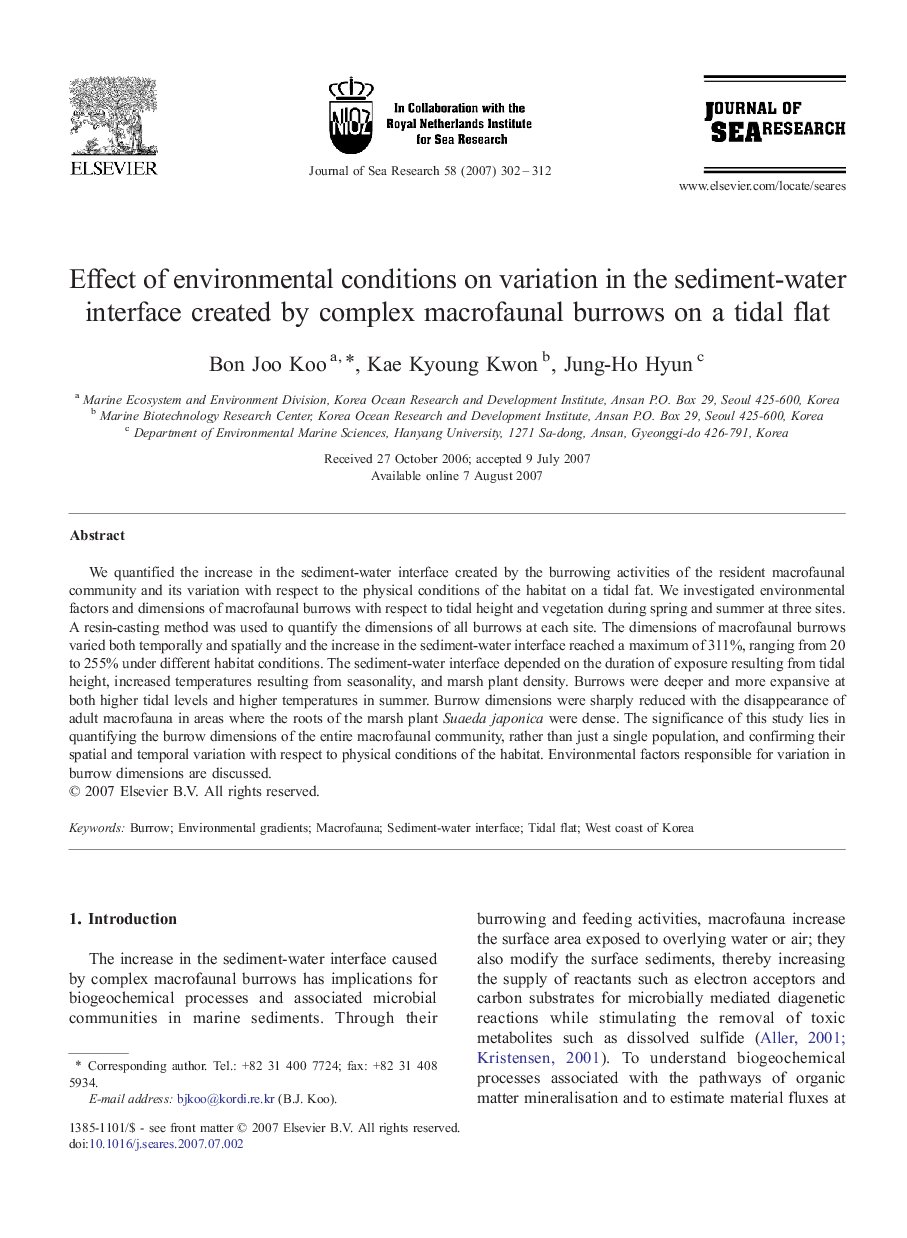| Article ID | Journal | Published Year | Pages | File Type |
|---|---|---|---|---|
| 4550437 | Journal of Sea Research | 2007 | 11 Pages |
We quantified the increase in the sediment-water interface created by the burrowing activities of the resident macrofaunal community and its variation with respect to the physical conditions of the habitat on a tidal fat. We investigated environmental factors and dimensions of macrofaunal burrows with respect to tidal height and vegetation during spring and summer at three sites. A resin-casting method was used to quantify the dimensions of all burrows at each site. The dimensions of macrofaunal burrows varied both temporally and spatially and the increase in the sediment-water interface reached a maximum of 311%, ranging from 20 to 255% under different habitat conditions. The sediment-water interface depended on the duration of exposure resulting from tidal height, increased temperatures resulting from seasonality, and marsh plant density. Burrows were deeper and more expansive at both higher tidal levels and higher temperatures in summer. Burrow dimensions were sharply reduced with the disappearance of adult macrofauna in areas where the roots of the marsh plant Suaeda japonica were dense. The significance of this study lies in quantifying the burrow dimensions of the entire macrofaunal community, rather than just a single population, and confirming their spatial and temporal variation with respect to physical conditions of the habitat. Environmental factors responsible for variation in burrow dimensions are discussed.
